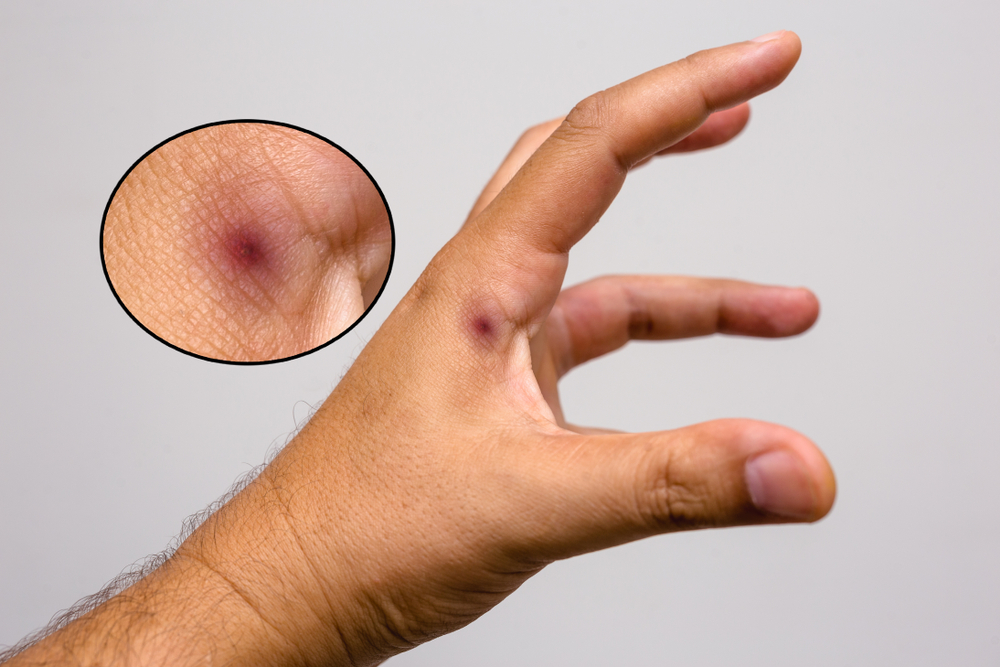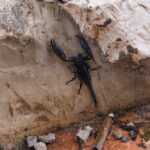Are Scorpions Poisonous? Understanding Risks and Treatments
Yes, all scorpions are poisonous to some extent. However, not all of them pose a significant threat to humans. There are risks associated with scorpion stings, as well as treatment and prevention strategies.
- Scorpion venom is potent, but its danger varies. Only a few species pose serious risks to healthy adults, and severe reactions are rare.
- Immediate identification of dangerous scorpion species and recognition of sting symptoms are crucial for effective management and treatment.
- Prompt medical attention is essential for severe reactions, especially in vulnerable populations such as young children and older adults, to mitigate potential complications.
Scorpion Venom: Potent but Not Always Deadly
Scorpions utilize venom to capture prey and defend against threats. This venom, a complex cocktail of neurotoxins, enzymes, and other compounds, can cause a range of effects in humans. When a scorpion feels threatened, its stinger releases venom, delivering a potent mix designed to incapacitate its prey or fend off predators, leading to scorpion envenomation.
Scorpion venom serves both offensive (hunting) and defensive (self-protection) purposes. However, its effects on humans can vary widely. The immediate symptoms of a scorpion sting often include redness, swelling, and a burning sensation, similar to those of a bee sting. Most scorpion stings are mild and not life-threatening.
While all scorpions are poisonous, not all are lethal to humans. Severe medical complications are uncommon, and only a few species pose a deadly risk. The venom’s primary function remains to incapacitate prey and protect the scorpion from threats. In essence, most scorpions prefer to avoid human encounters unless they feel threatened.
Despite the fearsome reputation of venomous scorpions, severe reactions are rare. Healthy adults typically experience only mild symptoms. However, the potency of scorpion venom should not be underestimated, especially in vulnerable populations. This balance of risk and reality is explored further in the following sections.
Grasping the nature of scorpion venom demystifies these creatures and aids in identifying more dangerous species and handling their stings effectively. We will delve deeper into the scorpions that pose the most significant risks to humans.
Identifying Dangerous Scorpion Species
There are more than 1,500 scorpion species worldwide. However, only around 30 to 40 of these species can be considered potentially harmful to healthy adult humans. Effectively managing the risks posed by these dangerous scorpion species requires proper identification. The Arizona bark scorpion and other bark scorpions, for example, are the only species in North America known for their potentially life-threatening venom.
Geographically, dangerous scorpions are found in various regions. The Arizona bark scorpion is primarily located in Arizona, California, Nevada, New Mexico, Texas, and Utah. Meanwhile, the Deathstalker scorpion, considered the most dangerous scorpion species in the world, can be found in the deserts of North Africa and the Middle East.
Despite the fearsome nature of these scorpions, advances in medical treatment and the availability of antivenom have made deaths from scorpion stings rare. Understanding where these scorpions live and recognizing their physical characteristics can significantly reduce the risk of dangerous encounters.
Symptoms of a Scorpion Sting
Recognizing the symptoms of a scorpion sting is the first step in determining the severity of the situation. Common scorpion sting symptoms include a sharp pain at the sting site, a burning sensation, swelling, and numbness. These immediate reactions are similar to those experienced from a bee sting but can vary depending on the scorpion species involved.
In cases of more severe reactions, symptoms can escalate to include muscle twitching, difficulty breathing, and unusual movements. These severe symptoms indicate a more significant envenomation and require urgent medical attention. Monitoring the sting site and the overall condition of the person stung helps in spotting these signs early.
Typically, symptoms from a scorpion sting resolve within 48 hours. However, if severe symptoms persist or worsen, it is vital to seek medical help immediately. Knowing these symptoms and their progression can help in making informed decisions and ensuring timely intervention.
What Happens During a Scorpion Sting?
When a scorpion stings, it delivers venom through a stinger at the end of its tail. This venom is a complex mix of peptides, enzymes, and various inorganic compounds designed to incapacitate its prey or defend against threats. The venom’s primary components, neurotoxins, specifically target the victim’s nervous system.
The neurotoxins in scorpion venom, particularly sodium channel toxins, disrupt the normal function of nerve cells. This disruption leads to an increased release of neurotransmitters, causing a range of symptoms from pain and swelling to more severe neuromuscular and ocular effects. These symptoms are a direct result of the venom’s impact on the nervous system.
Understanding the biological process of a scorpion sting helps demystify the immediate and severe reactions. Recognizing symptoms early and seeking appropriate treatment mitigates the effects of the venom.
How Common Are Severe Reactions to Scorpion Stings?
Severe reactions to scorpion stings are relatively rare. Less than 5% of scorpion stings lead to severe symptoms. Most stings, approximately 85%, produce only local symptoms at the site of the sting, such as pain, redness, and swelling. While scorpion stings can be deadly, fatalities are extremely rare, particularly in North America.
However, certain populations are more at risk. Young children and older adults are more susceptible to severe complications from scorpion stings. Those with compromised immune systems or pre-existing health conditions also face higher risks. In these groups, the risk of death from untreated venomous stings is higher, often resulting from heart or lung failure.
Despite the potential for severe reactions, the overall risk remains low. Prompt medical attention can make even severe stings non-life-threatening. This emphasizes the importance of seeking help immediately. The advent of medical treatments and antivenom has significantly reduced the mortality rate from untreated venomous scorpion stings in the U.S., making fatalities extremely rare.
These statistics alleviate unnecessary fear while emphasizing the need for preparedness and prompt action in vulnerable populations.
Immediate Actions After Being Stung by a Scorpion
If you or someone else is stung by a scorpion, taking immediate action is crucial to mitigate the effects of the venom. The first step is to contact your local poison control center for guidance. They can provide specific instructions based on the severity of the sting and the scorpion species involved.
Next, clean the wound with mild soap and water to prevent infection. Applying a cool compress to the sting site can help alleviate pain and reduce swelling. If the sting occurs on a limb, keeping it elevated can provide additional comfort and reduce the spread of venom.
Avoid administering medications that may cause sedation after a scorpion sting. These can interfere with the body’s response to the venom and complicate medical treatment. These steps help manage the immediate effects of the sting and prepare for necessary medical intervention.
Long-Term Effects of Scorpion Stings
While most scorpion stings result in temporary symptoms, long-term effects can occur, particularly in vulnerable populations. Individuals with pre-existing health conditions may face heightened risks of severe complications. Chronic health issues can make these individuals more susceptible to the venom’s effects, leading to prolonged recovery times and potential complications.
In rare cases, untreated venomous stings can lead to chronic pain or neurological disorders. The delayed effects of venom can manifest hours after a sting, sometimes resulting in heart or lung complications. These severe outcomes underscore the importance of prompt medical attention and proper treatment.
Young children are especially vulnerable to serious complications. The elderly face a similar risk as well. For these populations, even a mild sting can lead to significant health issues. Knowing the potential long-term effects of scorpion stings aids in taking proactive measures to prevent severe outcomes and ensure timely medical care.
Preventing Scorpion Stings in Your Home
Prevention is key to minimizing the risk of scorpion stings. Utilizing professional pest control services is crucial to effectively keep scorpions out of your home.
Physical barriers and traps are commonly employed as non-chemical methods to prevent scorpion invasions, promoting a humane approach to pest control. Ensuring that your home has no standing water can make it less attractive to scorpions. Implementing consistent preventive measures is key to maintaining a secure environment.
Taking proactive steps such as inspecting and shaking out clothes and shoes before wearing them can help prevent scorpion stings encounters. Moving cribs away from walls and utilizing crib netting can protect young children from scorpions in the home. By adopting these preventive measures, you can significantly reduce the risk to prevent scorpion stings.
When to Seek Medical Attention for a Scorpion Sting
People often ask are scorpions dangerous—most stings are mild, but certain symptoms and vulnerable groups warrant prompt medical care.
Recognizing when to seek medical attention after a scorpion sting is vital. Symptoms such as muscle twitching, difficulty breathing, or unusual movements may indicate a serious reaction requiring urgent care. Severe symptoms can be a sign of neurotoxic envenomation and necessitate immediate medical attention.
Young children and older adults are more vulnerable to severe complications from scorpion stings. Additionally, individuals with compromised immune systems are also at a higher risk. For children who are stung, contacting the local poison control center immediately is advised. If breathing difficulties arise, medical attention should be sought without hesitation.
Adults experiencing severe symptoms should also seek prompt medical care. Severe reactions warrant visiting urgent care or calling 911. Understanding these signs and knowing when to seek help can make a critical difference in managing the effects of a scorpion sting and recognizing serious symptoms.
While scorpions can pose a threat, most scorpion stings result in mild symptoms similar to bee stings. Understanding the nature of scorpion venom, identifying dangerous species, and recognizing sting symptoms are crucial in mitigating risks. Immediate actions, such as contacting poison control and proper wound care, can help manage the effects of a sting.
Frequently Asked Questions
How can you tell if a scorpion is poisonous?
You can determine if a scorpion is poisonous by observing its physical characteristics; generally, a scorpion with a thicker tail and smaller pincers is more venomous. This rule-of-thumb can aid in identifying potentially dangerous species.
Are house scorpions poisonous?
House scorpions are venomous, but their stings are generally not deadly to healthy adults. While they can cause pain, numbness, and swelling, serious reactions are rare.
Are all scorpions poisonous?
All scorpions are indeed poisonous, but only a few species are lethal to humans; most stings cause mild symptoms akin to a bee sting. Therefore, while caution is warranted, the majority of scorpions do not pose a significant threat.
What are the symptoms of a scorpion sting?
The symptoms of a scorpion sting typically include sharp pain, a burning sensation, swelling, and numbness. In more severe cases, individuals may experience muscle twitching, breathing difficulties, and unusual movements.
How can I prevent scorpions from entering my home?
To effectively prevent scorpions from entering your home, utilize professional pest control services, employ physical barriers and traps, and eliminate standing water. Additionally, inspect clothing and shoes before wear and use crib netting for young children.




